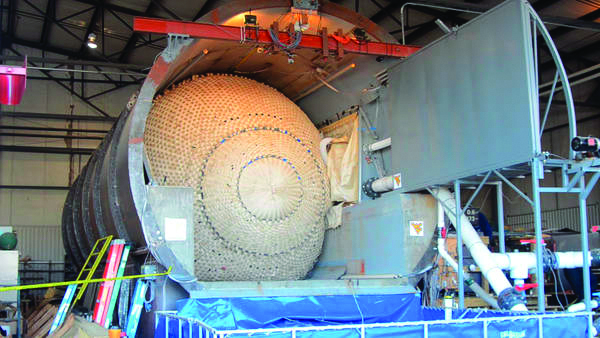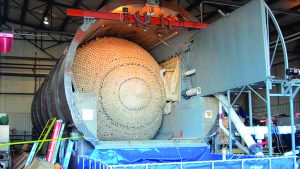
Danielle Rennard, Staff Writer

When Hurricane Sandy recently devastated areas in New York and New Jersey, it truly reminded us of how powerful nature is. Gusts of wind surged water into New York City’s subway system, leaving it closed for days. Parts of the subway were destroyed and many could not commute without running trains. West Virginia University may have found the solution to prevent events like this in the future, and guard tunnels during disasters. The New York Times suggests that a giant balloon could prevent millions of dollars worth of damage and save tunnels from being harmed. A one-ton bag constructed of strong fabric that is then filled with air may be that what protects tunnels from threats ranging from a terrorist strike or a storm.
The idea is simple and is only a three-minute procedure. Instead of retrofitting tunnels with expensive structures, such as metal floodgates, the project’s goal is to use relatively cheap materials to create an inflatable plug. It would be like blowing up a balloon inside a tube in order to block any water from going inside of it. “The goal is to provide flooding protection for transportation tunnels,” said John Fortune, who is managing the project for the federal Department of Homeland Security’s Science and Technology Directorate. However, there are some obstacles in creating a plug that is quick to install, durable and extremely strong. “Water is heavy, there’s a lot of pressure,” said Greg Holter, an engineer with Pacific Northwest National Laboratory who helps manage the project. “So it’s not as simple as just inflating and filling the space. The plug has to be able to withstand the pressure of the water behind it.”
This idea has been in development for more than five years and the most recent test was the twenty-first one conducted. Dr. Fortune believes that there are at least a few more years of testing and design work in order to perfect this idea. If the plugs are proven to be effective, they will become available to transit systems around the country costing around $400,000 each. In addition to subway tunnels, the plugs may also work for highway tunnels. However, the larger size of those tunnels would create additional technical challenges that would have to be sought out. Adam Lisberg, the chief spokesman for the Metropolitan Transportation Authority, which runs New York City’s transit systems, said the damage caused by the storm “is certainly going to focus our attention” on ways to protect the subways. “But it’s way too early to talk about any particular technology that’s been proposed,” he said.
The plug has come a long way from when the first one was designed. The first full-scale plug was made in 2010 with a single layer of Vectran and failed the pressure test. “It ripped right down the middle, from back to front,” Dr. Fortune said. In order to improve the structure, Dr. Barbero and ILC created a three-layer plug with the outer layer consisting of woven Vectran belts. With this design, if one belt tears it will not end up as a catastrophic failure. Therefore, this balloon plug may just be the future of preventing flooding and other disasters from destroying subway tunnels as well as highway tunnels.
Leave a Reply